Harry gave me the fever that causes these nighttime visions. My father was the one who first interested me in stream trout fishing by taking me to the iconic fishery, the Brule in Wisconsin. I was five years old when he broke me out of nursery school to go with him across the old Interstate Bridge connecting Minnesota and Wisconsin. The dream didn’t die after that but was nurtured by me pedaling my Columbia one-speed to Engwall’s in Piedmont, or Miller Creek, or, later, when I had a five-speed Schwinn Varsity, to Keene’s Creek and the Midway up in Hermantown. I fished the way Harry taught me: with fly rod, hook, sinker, and worm. I caught a few, caught many more chubs than brook trout, the speckled denizens of those tiny waters, and on occasion, when the Minnesota DNR planted keeper sized German browns (8″ or better fish), I managed to catch one or two of those as well.
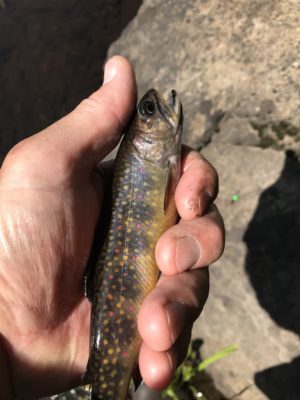
Over the years, my father introduced me to fishing the North Shore rivers, streams, and creeks for speckled trout: the Sucker, the Lester, the Manitou, the Temperance, and others. Though Dad owned a small collection of dry and wet flies, I never saw him use them when we fished. He was, like that drunk guy in a River Runs Through It a hook, sinker, and worm guy when it came to fishing brook trout. As a father myself, I introduced three of my four sons (sorry about that Dylan!) to the pleasures of stream fishing for brook trout.
During our family excursions up the Shore, we used my dad’s methodology. Somewhere along the way, Matt, the eldest, and Chris, my third son, developed an interest in tying and using flies. Though I inherited Dad’s flies and bought a few more on my own over the years, I remained a worm and hook guy. Why? Well, the few times I’d tried catching trout on a fly had been dismally disappointing. Since, during my working life, I managed maybe a trip up the Shore every two or three years, and since I love the taste of pan-fried speckled trout, I fished with what I knew would catch fish for dinner. This week, because it had been a good three years or better since I walked the slippery stones of a North Shore brook trout stream, I started to think that I needed time on the water in hip waders: just me, my fly rod, and wilderness. So when Rene’ announced she was spending Saturday with her pal Nancy picking blueberries in Bayfield, I told her I was going fishing.
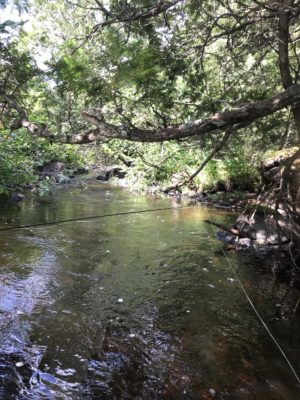
I swore, as my Jeep bounded over boulders and fallen trees down the logging trail leading to the stream I’d spend the day on, I’d stick to flies for at least the first hour just to see whether I could master the four count rhythm and catch a brookie or two a dry fly. Here’s the thing though: with some rare exceptions, most of the streams of the North Shore are really no more than creeks. Except for their lower reaches, where the streams broaden a bit as they roar through canyons near their mouths before emptying into Lake Superior, the vast majority of the North Shore watercourses are narrow and boulder strewn, with much of their upper reaches clogged by overhanging black alders. The same brush that keeps their waters cold enough for brook trout makes it impossible to toss a fly in the traditional way.
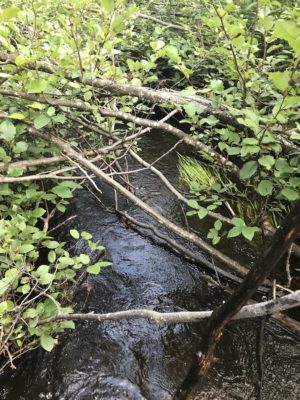
As I worked upstream, I found a few spots where I could make a cast with a dry fly. But given it was late morning and a sunny day, I had no strikes. There were no trout rising to snatch natural bugs from the river’s surface, a bad sign for someone trying to emulate the natural food of the ecosystem. After an hour of fruitlessly trying to mimic Norman MacLean, I gave up. I’d told Chris during a call on my way up the Shore that I was going wormless. That was a lie. I had brought worms: not the dew worms I normally fished with but tiny angleworms. I slipped off the fly I was using, tied on a small florescent jig, pinched down the barb with a pliers, slid a worm on the small No. 8 hook, and went to work.
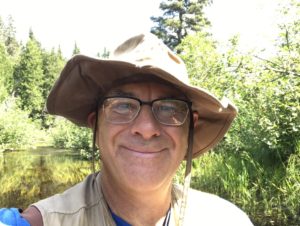
My plan was to work the upper reaches of the stream for a few hours, walk back to the Jeep, and motor down to the lower portion of the river, a place I’d fished with my old man and my sons, where I knew the trout to be bigger and the stream more forgiving. But I was catching trout where I was, albeit the biggest I actually landed was barely frying pan size at 7″. Though I missed a couple of bigger fish, getting them out of the water on the end of my jig but not into my hand, the majority of the fish I hooked and ended up releasing were between 4″-6″: too small, by my standards, to keep. A few of the brookies were tiny, maybe 3″ long. They too were carefully placed back in the cold waters of the river to grow.
“Just another pool,” I’d tell myself as I worked through the black alder in search of trouty places. I’d come to a spot that looked good, usually a whirling pool beneath low hanging cedars, confirm my instincts by catching a trout or two or three, and then, instead of turning around and heading back to the car, I kept going. It was so silent there, in the bosom of the river. There were no sounds of humanity, no car horns or train whistles or voices. Only the squawk of jays, the trilling of songbirds, and the occasional peeping of the bald eagle that flew above me, seemingly interested in my quest for trout, broke the silence of the valley. So I stayed, working upstream, until, pulling my FitBit out of my fishing vest, I noted it was five-thirty. I’d fished the river for six hours straight, hooked and landed two-dozen specs, used up all my worms, and lost a half-dozen flies and jigs to pines and cedars. It was time to head home.

Easier said than done. I’d forgotten my walking stick, an essential for fishing streams like the one I was on, back at the house. Though my waders, inherited from Dad, had carpeting glued to the soles, making them less slippery than bare rubber, a walking stick for balance is pretty well standard equipment for trying to negotiate a river on the North Shore. I made do: I found a nicely peeled beaver chew that fit the bill. But that stick wasn’t the safeguard I thought it would be. I took three tumbles on the way downstream to the Jeep, banging both knees and eventually ending up on my ass in the current, my T-shirt soaked, water leaking over the tops of my waders. But beyond a few scrapes and scratches, I didn’t get hurt. Still, with my back aching and my body tired from crawling over old beaver dams and flotsam and alder limbs, I came to the realization that, at 64 years old, a man shouldn’t be doing what I was doing by myself. Sure, I had my cell phone with. But there was no service. If I broke an ankle trying to step through the slippery rocks, or broke a wrist trying to stop myself from falling, what then?
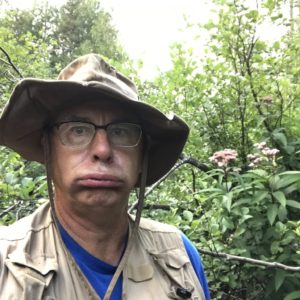
I tried flies again in some of the wider spots as I made my way to the car. Nothing. I was ready to give up and just keep pushing through but when I came to the last bit of open water and saw trout feeding on small bugs on the surface, I had to give the dry fly on the end of my leader one last go.
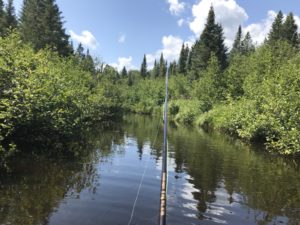
Success! After fifty-plus years of worm dunking, only occasionally tossing a dry fly at trout with no success, I managed to make a decent four count cast near where a brookie had surfaced, feel the strike, set the hook, and land the fish. It wasn’t a monster: just another 6″ speckled bit of God’s handiwork. But it was something.
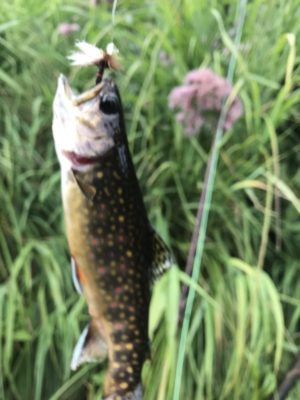
Peace.
Mark
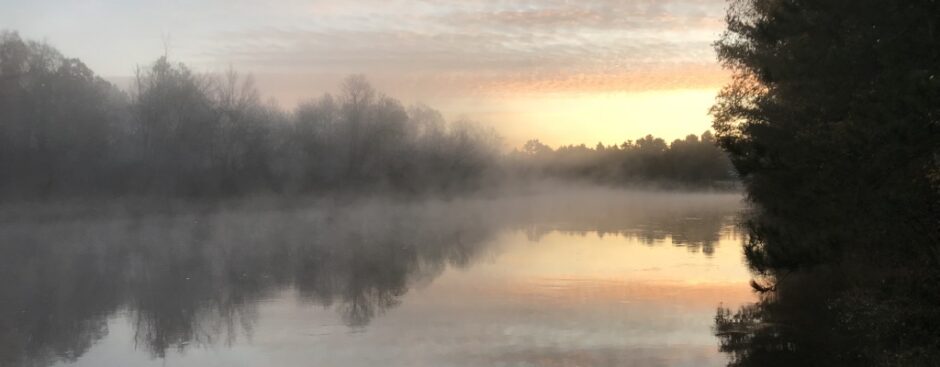


Congratulations on what sounds like an excellent day, fish or no fish! Reminds me of learning to fly fish on the streams outside Cheyenne, Wyoming which were much more open than the Alder laden streams you tackle.
I would relish open! See you tomorrow my friend and thanks for reading!